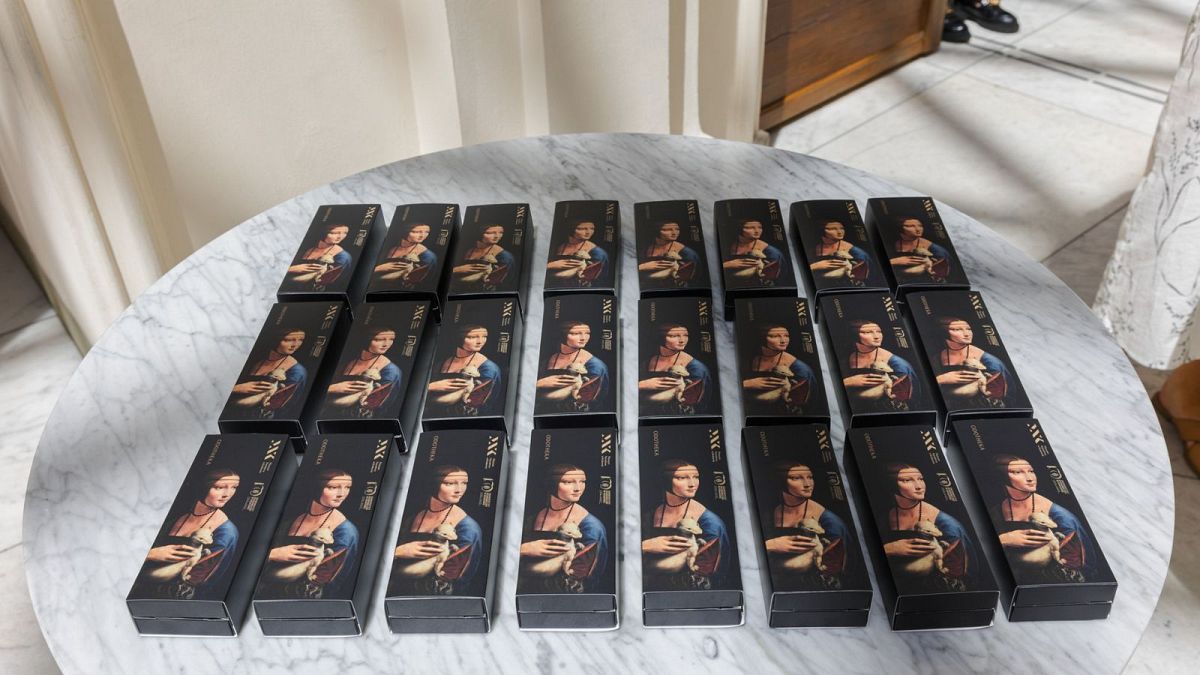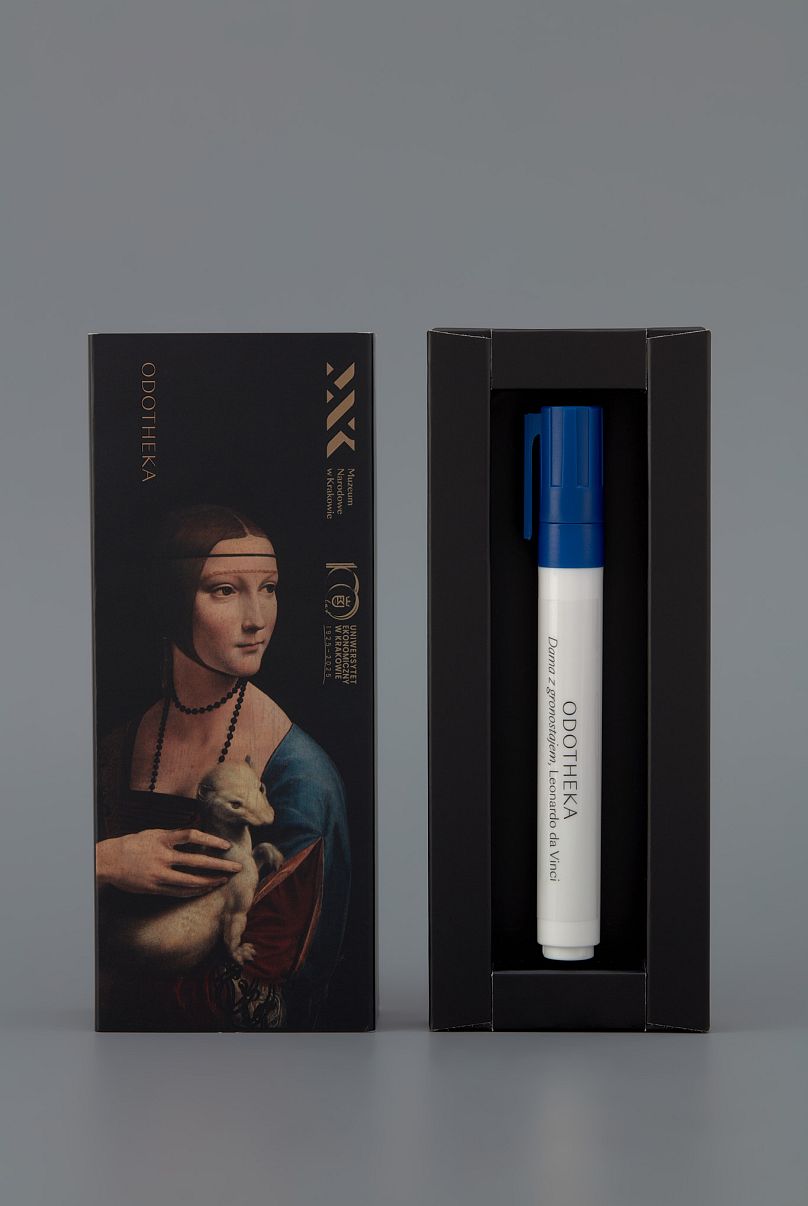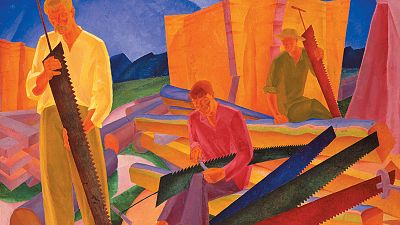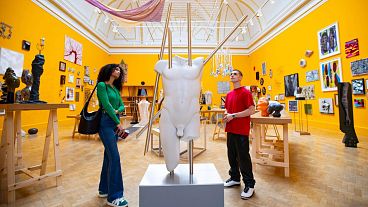At the National Museum in Kraków, Leonardo da Vinci can now put a smell on you.
The crisp musk of an old book. The sweet sting of a lover's perfume on a coat collar.
Smells accentuate our experiences and bond us to objects, their imagined memories seeped into our subconscious.
But how far could our sense of smell take us when it comes to experiencing masterpieces? Could we, for example, truly feel like we were there as 'Lady with an Ermine' was first created?
A team of researchers in Poland and Slovenia are attempting to find out, having developed a scented pen for Leonardo da Vinci's 15th century painting, which visitors of the National Museum in Kraków can now sniff as they gaze into the eyes of Cecilia Gallerani.
“Institutions often perceive odors emitted from facilities as unnecessary information, and perhaps even as undesirable pollution. However, from now on, visitors will be able to explore the smell of historic objects in a completely new and little-explored way. This project is truly groundbreaking," Elżbieta Zygier, Chief Conservator of the National Museum in Kraków, says.
Developed through chemical analysis, the pen attempts to replicate how the object itself would have once smelt.
"We can feel the element of a walnut wood, because the walnut board was used as the base of the painting, and the smell of oil paintings," Tomasz Sawoszczuk, the project's lead researcher at Kraków University of Economics, says.
"It's a very nice, historical museum smell," he adds, also emphasising that one small sniff is enough, two maximum.
The pen also has to be replaced every 3 to 4 weeks: "After one month it's not the same smell."
The world's first library of scents of historic objects
Part of the Odotheka project, the world's first library of scents of historic objects, Sawoszczuk's team are working in collaboration with colleagues at the Ljubljana University and Slovenian national museum to recreate the scents of nine other objects of great importance to Polish and Slovenian heritage.
These will include a snuffbox belonging to Franc Prešeren, the Slovenian national poet, and a hygienic powder made in Kraków in the 1920s that won a gold medal prize at an exhibition in Paris and was advertised in newspapers by Pola Negri, a Hollywood star of Polish origin.
The project was initiated in 2021, after Sawoszczuk was asked by the National Museum in Kraków to assess the air quality inside the glass casing that housed 'Lady with an Ermine'.
"I just thought, okay, I'm one of the few people in the world that can approach the object without any glass and that it will be nice to collect the smell of this painting and bring it out."
While everything inherently has a smell, this also evolves over time depending on what happens to an object and where it is stored. In this way, the original scent of something can never truly be captured, but a timeline can be traced.
"We are not measuring and recreating the original smell of the objects, because objects have their own history. We are aware that on the historical way of the objects, they were in different places. They were undergoing different conservation treatments."
Another added bonus of this? Conservation treatments mean bad smells are a rarity.
Sensory sightseeing
"Odors have a power of persuasion stronger than that of words, appearances, emotions, or will," German author Patrick Süskind wrote in his 1985 novel, 'Perfume: The Story of a Murderer'.
Still, not even Michelin-starred UK chef Heston Blumenthal could persuade cinema audiences that eating and smelling fermented fish paste during a screening of the book's movie adaption in 2011 was a good idea.
For decades, arts venues have contemplated ways to make the experience of viewing something more engaging through multi-sensory techniques.
While sometimes gimmicky (William Castle's 1959 movie The Tingler and its vibrating cinema seats) or lacklustre and overdone (immersive art exhibitions) the addition of more tactile elements to cultural spaces does make sense in a digital age where establishments are struggling with funding and people need more convincing to go outside.
It also taps into the Maya Angelou's adage of people will never forget how you made them feel.
"We [the research team] were joking that it's near 4K sightseeing now, so you not only use your eyes to see the objects, not only use your ears with the audio guide, not only use your touch because, outside of the showcase of 'Lady with an Ermine', there is the 3D copy of it, so you can touch the copy," Sawoszczuk says.
All of this, along with scents, hopefully creates a genuinely immersive experience that enhances our understanding and emotional response to what we're viewing.
More importantly, the addition of tailored smells could greatly improve gallery and museum experiences for those that are blind or partially sighted, helping them to feel more connected to historical objects.
"One of the big parts of this project is surveying the emotions of people after the exhibition. We will also do the same with blind people and ask them if this way of sightseeing with the smell is for them attractive, and how it influences their emotions about the exhibition itself. This is what we want to gather," Sawoszczuk says.

















